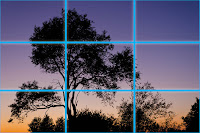Natural Light
A great way to improve your photography is to learn how to harness the power of the most important and powerful (yet cost effective) light source available to us - the sun. The conditions natural light provides varies with where you are, the weather, and the time of day. Once you can observe which types of light create which types of moods and atmospheres, you can begin to plan when and where you take your photos in order create a more meaningful photograph.
Hard Light:
Hard light comes from direct sun on a clear day. This light is strong and direct and casts deep shadows with hard edges. Typically this isn't a good time to be shooting outdoor portraits, as hard light can emphasize imperfections and make for an unflattering head shot. Mid day light is ideal for shooting architecture and bringing out colours. You may have heard of the "golden hour": this is hard light at the beginning of the day shortly after the sun has risen, or the end just before it sets. While the light is still hard, it is significantly softer than at mid day and comes at your subject from a lower angle, bringing out form and texture.
Soft Light:
As you may have guessed, this type of light arises from the opposite situation: light from a cloudy day, or in the shade. This gives shadows a soft edge and provides very little contrast. Use an overcast day for shooting portraits or nature still lifes (such as leaves or flowers). Just keep in mind that if you include the sky in your composition, it will most likely turn out a bright white - something to avoid if that isn't the look you're going for.
Dramatic Light:
The opportunity to make use of natural dramatic light is much more rare than hard or soft, so be sure to take advantage of it. Dramatic weather such as thunderstorms create dramatic light. Some things to look out for are right before the storm, or afterwards when the sun breaks through the clouds. Dramatic lighting makes great landscape and architecture photos. Just keep in mind: if you're shooting before the storm, make sure you give yourself time to get your equipment somewhere dry to avoid the unthinkable.
Sunrise and Sunset:
The nature of a sunrise or sunset will depend on the weather: it could be hard, soft, or dramatic. This differs from the golden hour since the sun has already risen or hasn't yet set in those cases. Sunrises and sets usually feature the sun still visible in the sky. The light is full of colour to give photos an almost painted look. Pretty much anything looks good at sunrise or sunset, so it's worth taking the time to get up early or staying out to catch the sunset to get a guaranteed shot. You'll see this a lot in travel photography. A photographer can't ride on sunrise and sunset photos for an entire portfolio, but practicing a few never hurt anyone.
Naturally Lit Interiors:
LIght from the sun influences photos taken indoors as well, streaming in through doors and windows. Even when you don't have your camera with you, try to pay attention to where light comes from indoors. Typically the weather will have less impact as the light filtering in is usually more on the hard side, but this will depend on the size of the windows available. This can create a very dramatic and moody effect, especially in old or abandoned buildings. Some photographers use HDR (tutorial at link) to show all detail in a naturally lit interior. Try experimenting with both HDR and shadowy corners and see what you prefer.
The beginning and the end of the day are textbook examples of "good" natural light, but there's no reason to limit yourself. Be creative and try some portraits on a sunny afternoon to learn why they don't work, or think of a scenerio where they could work. The great thing about natural light is that it allows you to constantly improve your photography by observing the light around you and thinking about what subject would go well with it and what story that photograph would tell.







































